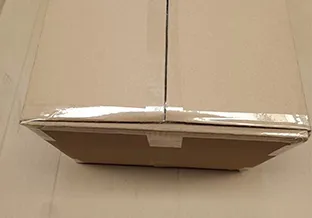
resurfacing cast iron skillet
Resurfacing a Cast Iron Skillet A Comprehensive Guide
Cast iron skillets have long been a staple in kitchens around the world, known for their durability, heat retention, and unparalleled cooking ability. However, over time and with frequent use, these beloved pans can show signs of wear and tear. Rust, food residue, and a loss of non-stick properties are common issues that can arise. Fortunately, resurfacing your cast iron skillet can breathe new life into it. This article will guide you through the process of resurfacing your cast iron skillet, ensuring it remains a cherished tool in your culinary arsenal.
Understanding the Importance of Resurfacing
Before diving into the process, it’s essential to recognize why resurfacing your cast iron skillet is necessary. Over time, food residues, oils, and moisture can cause rust to develop and the seasoning layer to wear off. This degradation not only affects the cooking performance of your skillet but can also alter the taste of your food. Resurfacing helps to restore the skillet to its former glory, providing a smooth, non-stick surface that enhances cooking efficiency and flavor.
Materials You Will Need
To successfully resurface your cast iron skillet, you will need a few materials
- Steel wool or a stiff brush - Dish soap (preferably unscented) - A towel or paper towels - Vegetable oil, flaxseed oil, or shortening (for the seasoning process) - Aluminum foil (optional, for the oven method)
Step-by-Step Resurfacing Procedure
1. Initial Cleaning Begin by thoroughly cleaning your skillet. Use steel wool or a stiff brush to scrub away any rust, food particles, or residue. If necessary, mix some dish soap with warm water to assist in removing stubborn build-up. Rinse the skillet well and dry it completely with a towel or paper towels to prevent any moisture from causing further rust.
resurfacing cast iron skillet

2. Removing Rust If your skillet has developed rust spots, you may need to be more aggressive in the cleaning process. Continue using the steel wool to remove all rust, ensuring you reach all areas of the surface. For more severe rust, soaking the skillet in a vinegar solution (equal parts vinegar and water) for a couple of hours can help loosen rust and make scrubbing easier. Afterward, rinse and dry thoroughly.
3. Seasoning the Skillet Once clean and dry, it’s time to season your skillet. This step is crucial for creating a smooth, non-stick surface. Preheat your oven to 450°F (232°C). Apply a thin layer of vegetable oil, flaxseed oil, or shortening to the entire surface of the skillet, including the handle and the exterior. Use a paper towel to wipe off any excess oil, leaving just a thin film.
4. Baking the Skillet Place the skillet upside down on the middle rack of your preheated oven. You may want to place a sheet of aluminum foil on the bottom rack to catch any drips. Bake the skillet for one hour to allow the oil to polymerize and create a non-stick coating. After an hour, turn off the oven and let the skillet cool inside. This cooling process helps to further solidify the seasoning.
5. Repeat if Necessary For optimal results, consider repeating the seasoning process two to three times. Each layer adds more durability to the non-stick surface, enhancing cooking performance and longevity.
Maintenance Tips
After resurfacing your cast iron skillet, maintaining its condition is vital. Always clean your skillet after use with hot water and a stiff brush—avoid using soap unless absolutely necessary. Dry it immediately to prevent rust, and apply a light coating of oil after each use to maintain the seasoning.
Conclusion
Resurfacing a cast iron skillet is a simple yet rewarding process that can restore its functionality and aesthetic appeal. With just a few materials and some time, you can bring your skillet back to life, ensuring it continues to serve you delicious meals for years to come. Remember that the care and maintenance you provide will ultimately determine the longevity of your cast iron companion, making it a crucial aspect of your cooking routine. Enjoy your culinary adventures with your revitalized cast iron skillet!
-
Season Cast Iron Perfectly with GPT-4 Turbo TipsNewsAug.01,2025
-
High Quality Cast Iron Cookware - Baixiang County Zhongda MachineryNewsAug.01,2025
-
Premium Cast Iron Pan: Durable & Perfect HeatNewsAug.01,2025
-
High Quality Kitchen Durable Black Round Cast Iron Cookware Pancake Crepe Pan-Baixiang County Zhongda Machinery Manufacturing Co., Ltd.NewsAug.01,2025
-
Cast Iron Cookware - Baixiang County Zhongda Machinery | Nonstick, Heat ResistanceNewsAug.01,2025
-
High Quality Kitchen Durable Black Round Cast Iron Cookware - Baixiang County Zhongda Machinery | Non-Stick, Heat Retention, DurableNewsJul.31,2025


